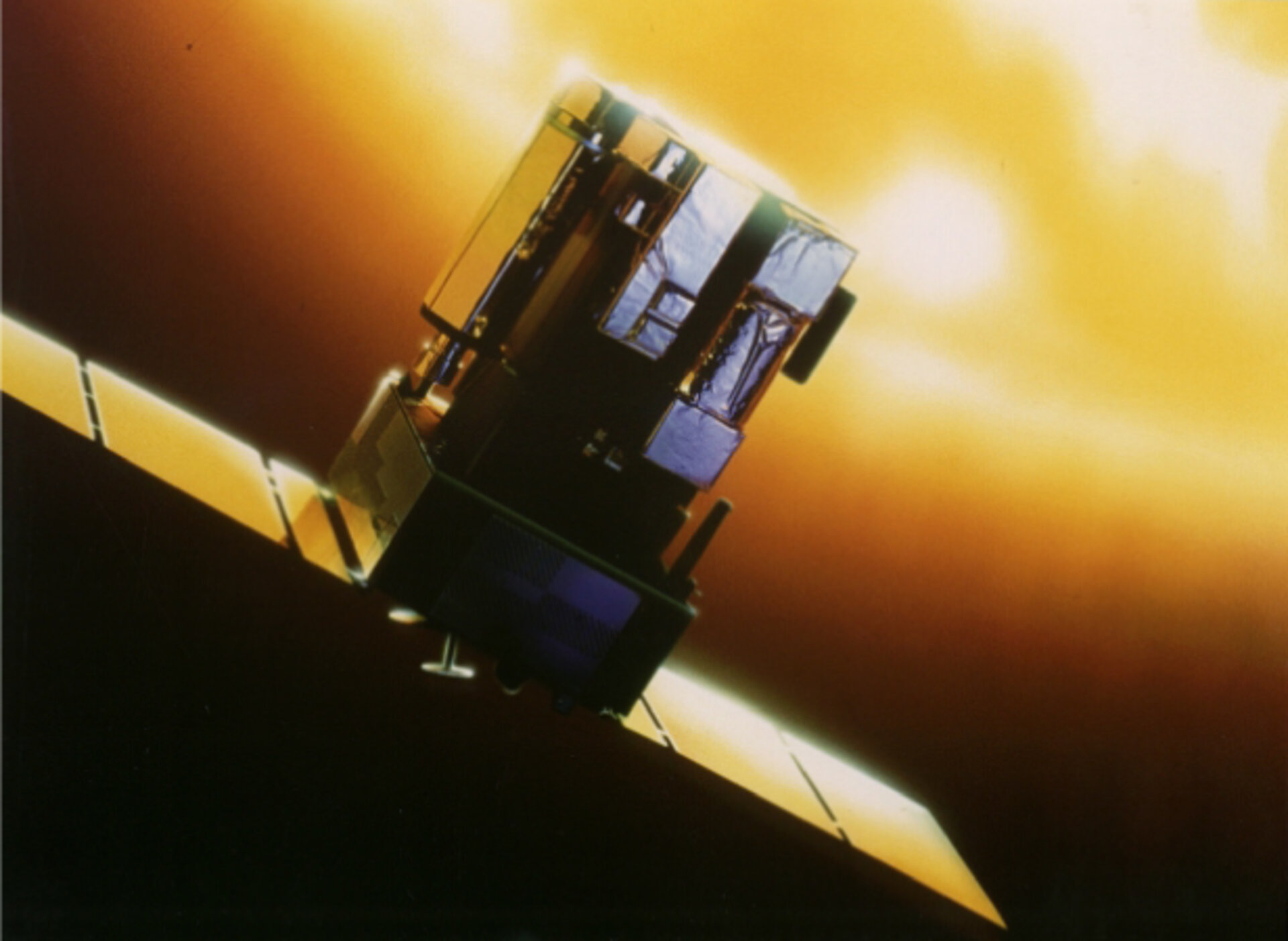SOHO operations
The Solar and Heliospheric Observatory (SOHO) is stationed 1.5 million kilometres away from Earth. There, it constantly watches the Sun, returning spectacular pictures and data of the storms that rage across its surface.
SOHO's studies range from the Sun's hot interior, through its visible surface and stormy atmosphere, and out to distant regions where the wind from the Sun battles with a breeze of atoms coming from among the stars.
The SOHO mission is a joint ESA/NASA project.
SOHO, the Solar & Heliospheric Observatory, is a project of international collaboration between ESA and NASA to study the Sun from its deep core to the outer corona and the solar wind.
SOHO was launched by NASA on an Atlas II-AS rocket (AC-121) from the Cape Canaveral Air Station (Florida, United States) on 2 December 1995. The SOHO spacecraft was built in Europe by an industry team led by prime contractor Matra Marconi Space (now EADS Astrium) under overall management by ESA.
The twelve instruments on board SOHO were provided by European and American scientists. Nine of the international instrument consortia are led by European Principal Investigators (PI's), and three by PI's from the US. Large engineering teams and more than 200 co-investigators from many institutions supported the PI's in the development of the instruments and in the preparation of their operations and data analysis.
NASA was responsible for the launch and is now responsible for mission operations. NASA's Deep Space Network stations are used for data downlink and commanding. Mission control is based at Goddard Space Flight Center in Maryland.















 Germany
Germany
 Austria
Austria
 Belgium
Belgium
 Denmark
Denmark
 Spain
Spain
 Estonia
Estonia
 Finland
Finland
 France
France
 Greece
Greece
 Hungary
Hungary
 Ireland
Ireland
 Italy
Italy
 Luxembourg
Luxembourg
 Norway
Norway
 The Netherlands
The Netherlands
 Poland
Poland
 Portugal
Portugal
 Czechia
Czechia
 Romania
Romania
 United Kingdom
United Kingdom
 Slovenia
Slovenia
 Sweden
Sweden
 Switzerland
Switzerland


























